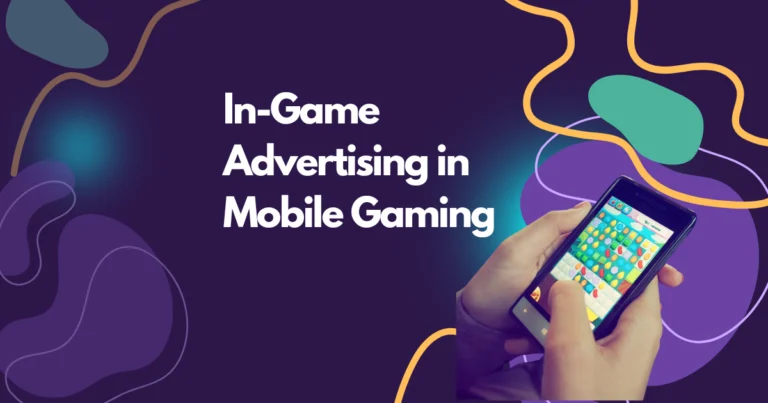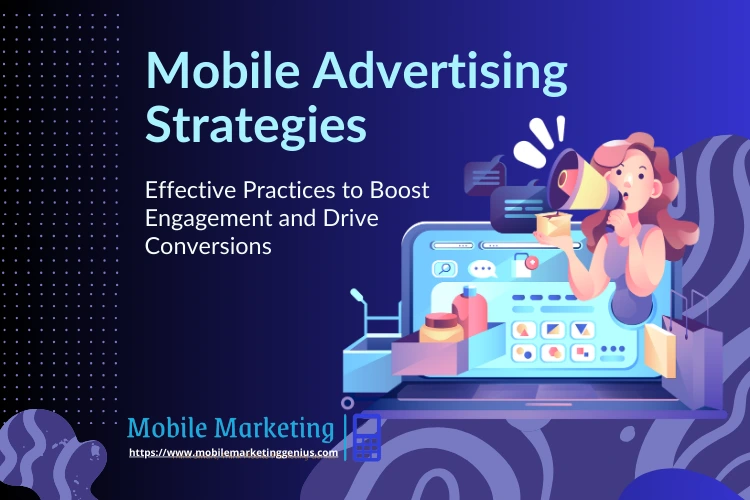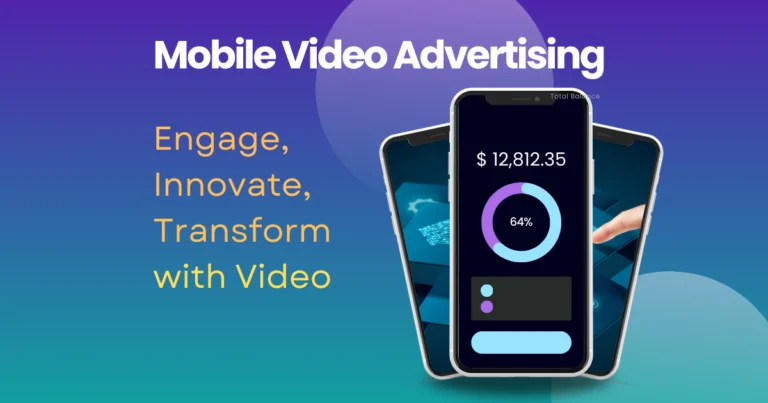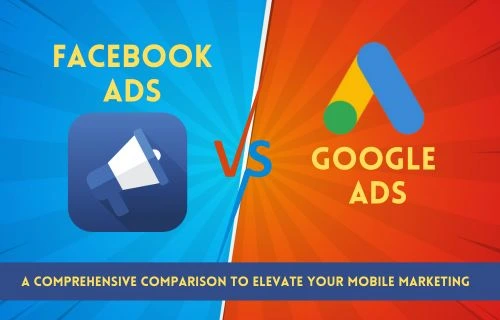Mastering the Basics of Mobile Advertising: A Comprehensive Guide to Benefits, Formats, and Trends

Mobile Advertising has emerged as a crucial element in the world of mobile marketing, allowing businesses to engage consumers directly through their smartphones and tablets. As part of a comprehensive mobile digital marketing strategy, Mobile Advertising uses various ad formats to target users based on factors like location, behavior, and demographics. Understanding the Basics of Mobile Advertising is key for businesses looking to thrive in today’s mobile-first world.
This article will explore the Basics of Mobile Advertising, providing insights into what it is, how it works, its benefits, and the latest trends that are shaping the future of mobile digital marketing.
Table of Contents
1. What is Mobile Advertising?
To answer the question What is Mobile Advertising, we will explore the Basics of Mobile Advertising that refer to delivering marketing messages to users via their mobile devices through paid advertising channels. These ads appear in several formats, including banner ads, video ads, push notifications, in-app ads, and SMS marketing. The primary goal of mobile advertising is to reach consumers wherever they are, whether they’re browsing social media, using mobile apps, or surfing the web on their smartphones.
Mobile advertising is highly effective because it allows businesses to deliver personalized, real-time messages. These ads are crafted based on factors such as the user’s location, interests, and browsing behavior, which sets mobile advertising apart from more traditional forms of digital marketing. To fully grasp the Basics of Mobile Advertising, businesses need to understand how these ads can target and engage users in the most relevant ways.
2. Key Features of Mobile Advertising
the Key Features of Mobile Advertising are :
- Targeted Ads: Mobile ads are personalized based on user demographics, location, and interests, making them more relevant and engaging for the audience.
- Wide Reach: With smartphones now dominating the digital landscape, mobile ads enable businesses to reach a larger and more diverse audience, a critical aspect of any mobile digital marketing strategy.
- Variety of Formats: A key component of the Mobile Advertising is its flexibility. Mobile ads come in different formats, allowing businesses to choose the most effective option for their mobile marketing objectives.
3. How Mobile Advertising Works
The Basics of Mobile Advertising revolve around delivering short, attention-grabbing content to encourage user interaction. These ads aim to prompt users to click on a link, download an app, or perform an action such as filling out a form.
Mobile advertisers typically develop strategies based on the specific goals of their mobile marketing campaign, the target audience, and available budget. Some businesses may focus on acquiring new users through app installations, while others may aim to drive conversions through e-commerce or lead generation.
By integrating mobile advertising into their broader mobile digital marketing strategy, businesses can create multi-channel campaigns that engage consumers consistently across various platforms, such as mobile applications. This integrated approach is a key part of the Basics of Mobile Advertising, ensuring higher conversion rates and long-term brand loyalty.
4. Types of Mobile Advertising
There are different types of mobile advertising:
- Banner Ads Banner ads are among the most common forms of Mobile Advertising. They appear at the top or bottom of a webpage or mobile app screen and may include images, text, or animations. These ads are clickable and often direct users to a landing page. Example: A travel app might place a banner ad on a weather app offering vacation deals to engage users.
- Video Ads Video ads are becoming increasingly popular due to the rise in mobile video consumption. These short, often autoplay ads are featured within apps or social media feeds. Example: A fashion brand might create a video ad on Instagram, promoting their new collection to encourage online shopping.
- In-App Ads In-app advertising refers to ads that appear within mobile applications, such as banners, videos, or pop-ups. These ads are highly targeted based on the user’s activity within the app. Example: A gaming app could show ads for a related game, encouraging users to download it from the app store.
- Push Notifications Push notifications are messages sent from an app to a user’s mobile device, even when the app is not actively being used. These notifications often include promotional offers or timely updates. Example: A food delivery app might send users a push notification offering free delivery during lunchtime.
- SMS Advertising SMS ads involve sending promotional or informational text messages directly to users’ phones. Given their high open rates, SMS advertising remains a powerful tool in mobile digital marketing. Example: A car dealership might send a promotional SMS offering discounts on vehicle services, encouraging users to book an appointment.
- Click-to-Call Ads Click-to-call ads enable users to directly contact a business by clicking the ad, which opens the phone’s dialer with the business’s number preloaded. Example: A plumbing company could use click-to-call ads to make it easier for customers to reach them for emergency services.
- QR Codes QR codes are scannable barcodes that take users to a website, landing page, or app store when scanned. They’re often used to bridge offline and online marketing efforts. Example: A retailer could place a QR code on product packaging, offering customers a discount on their next purchase when scanned.
5. Benefits of Mobile Advertising
- Personalization The Basics of Mobile Advertising enable businesses to deliver highly personalized ads to users based on their preferences, behavior, and location. This increases the relevance of the ads and improves engagement in mobile digital marketing campaigns.
- Real-Time Engagement With the Mobile Advertising, businesses can reach consumers at the right moment. Whether through a push notification from a mobile app at lunchtime or an SMS during a promotion, real-time engagement can boost conversion rates significantly.
- Increased Reach As smartphones continue to dominate, mastering the Basics of Mobile Advertising allows businesses to reach a vast and diverse audience. This expanded reach helps companies target potential customers globally.
- Cost-Effective Mobile ads, particularly those offered via cost-per-click (CPC) or cost-per-impression (CPM) models, are generally more cost-effective than traditional advertising methods. This makes them ideal for businesses of all sizes looking to maximize ROI.
- Measurable Results Mobile advertising platforms provide detailed data on campaign performance, including impressions, clicks, and conversions. This enables businesses to track results and optimize their campaigns to achieve better outcomes.
6. Disadvantages of Mobile Advertising
- Ad Blockers The widespread use of ad blockers can reduce the reach of some mobile advertising campaigns, particularly banner ads.
- Limited Screen Space Mobile devices have smaller screens, limiting the space available for ads. This can make it challenging to create engaging ads without negatively impacting the user experience.
- Privacy Concerns As mobile advertising relies on user data for targeting, there are growing concerns about privacy. Businesses must be transparent about their data collection practices and ensure compliance with privacy regulations like GDPR.
7. Emerging Trends in Mobile Advertising
- AI and Machine Learning Artificiel Intelligence (AI) and machine learning are transforming the Basics of Mobile Advertising by improving ad targeting and personalization. These technologies analyze user data to predict behavior and deliver more relevant ads.
- Augmented Reality (AR) AR is gaining traction in mobile apps, allowing brands to create interactive, immersive ads that engage users in new ways. From virtual try-ons to interactive games, AR offers new possibilities for mobile marketing. the IKEA immersive mobile marketing is a good example that showcase the use of AR for capturing great audience.
- Voice Search Optimization With the growing use of voice assistants like Siri and Alexa, optimizing mobile ads for voice search is becoming increasingly important.
8. Conclusion
Mastering the Basics of Mobile Advertising is crucial for businesses looking to engage and convert mobile users effectively. Through personalized, real-time messaging and various ad formats, mobile advertising enables businesses to reach a broad audience, improve engagement, and boost conversions.
By staying up to date with emerging trends like AI, AR, and voice search, businesses can ensure their Mobile Advertising strategies remain competitive in the ever-evolving digital landscape. As mobile technology continues to grow, incorporating mobile advertising into your marketing strategy will be essential for driving long-term success.







3 Comments
Comments are closed.